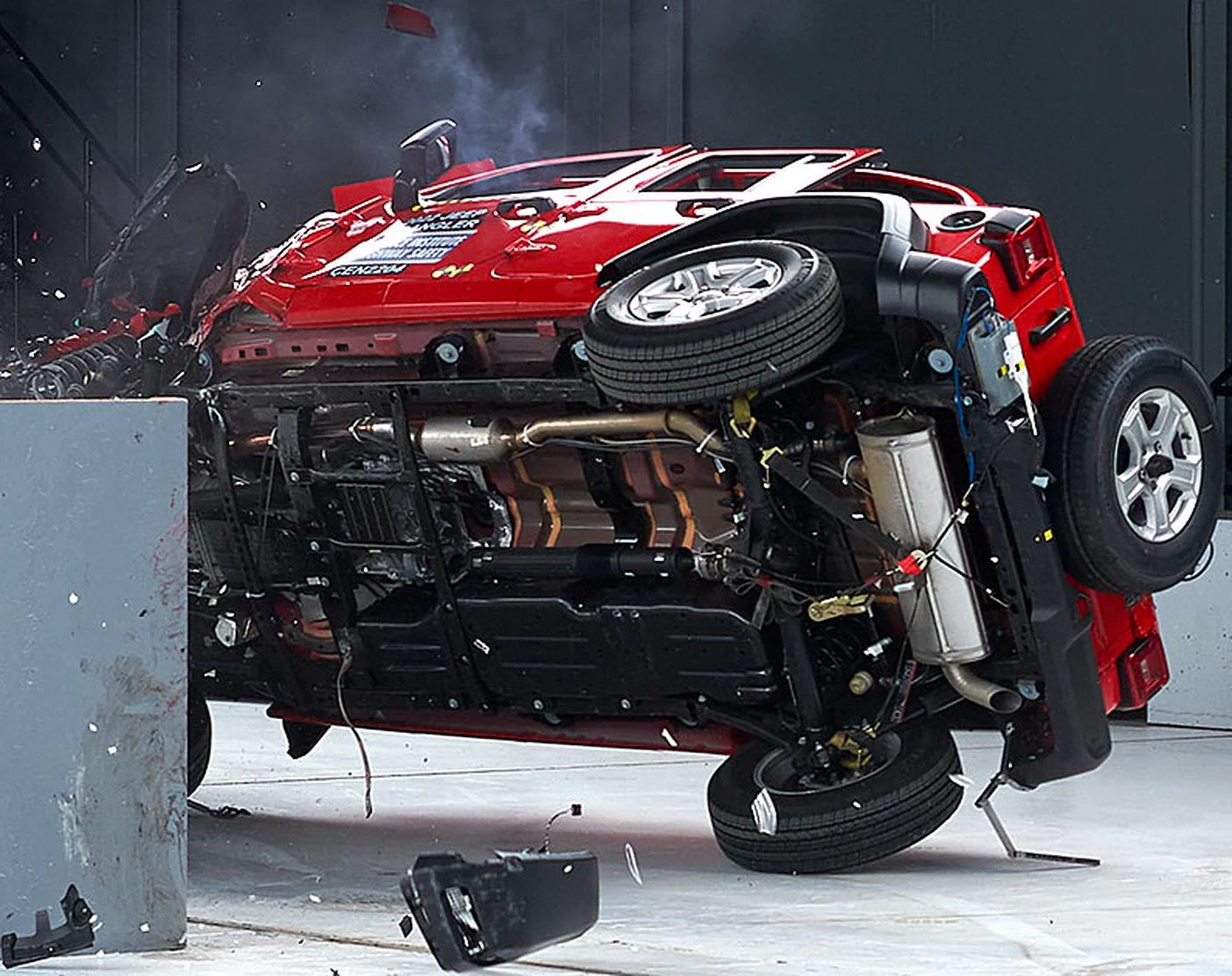Jeep Wranglers are one of the most iconic and popular vehicles in the world. They are known for their rugged design, off-road capabilities, and adventurous spirit. But are they safe to drive on the road? How do they perform in crash tests? What safety features do they have? In this article, we will answer these questions and more, based on the latest research and data available.
Jeep Wrangler Safety Ratings
One of the ways to measure the safety of a vehicle is to look at its ratings from various testing agencies. These agencies conduct different types of crash tests and evaluate how well the vehicle protects its occupants and other road users. Some of the most reputable agencies are the National Highway Traffic Safety Administration (NHTSA), the Insurance Institute for Highway Safety (IIHS), and the European New Car Assessment Programme (Euro NCAP).
NHTSA Ratings
The NHTSA is a federal agency that regulates vehicle safety standards and conducts crash tests on new vehicles. The NHTSA rates vehicles on a scale of one to five stars, based on their performance in four tests: frontal impact, side impact, rollover, and overall.
The latest Jeep Wrangler model, the JL, was introduced in 2018 and featured significant improvements in safety, fuel efficiency, and technology. However, the NHTSA has only subjected the Wrangler to two of its four tests so far: frontal impact and rollover. As a result, the Wrangler does not have an overall safety rating from the NHTSA yet, just individual test ratings.
In the frontal impact test, where the vehicle runs straight into a flat wall, the Wrangler received four out of five stars for both the driver and the front seat passenger. This is a good rating, though many SUVs today receive five stars for a frontal impact.
In the rollover test, where the vehicle’s stability and roof strength are assessed, the Wrangler received three out of five stars. This is a below-average rating, reflecting the Wrangler’s high center of gravity and relatively narrow track width. The NHTSA estimated that the Wrangler has a 27.9% risk of rollover in a single-vehicle crash, which is higher than most SUVs.
The NHTSA has not yet performed any side impact tests on the Wrangler. These tests simulate collisions with another vehicle or a fixed object from the side. Side impact tests are important because they account for about a quarter of all fatal crashes in the US.
IIHS Ratings
The IIHS is a non-governmental organization that conducts independent crash tests and evaluates vehicle safety features. The IIHS rates vehicles on a scale of poor, marginal, acceptable, and good, based on their performance in six tests: small overlap front (driver-side and passenger-side), moderate overlap front, side, roof strength, head restraints and seats, and front crash prevention.
The IIHS has not tested the new Wrangler JL yet, but it has tested the previous generation model, the JK, which was produced from 2007 to 2017. The JK received mixed ratings from the IIHS, ranging from poor to good depending on the test.
In the small overlap front test, where only 25% of the vehicle’s front end strikes a barrier at 40 mph, the JK received a poor rating for both driver-side and passenger-side. This means that there was a high risk of injury to the driver or passenger in this type of crash.
In the moderate overlap front test, where 40% of the vehicle’s front end strikes a barrier at 40 mph, the JK received a good rating for both driver-side and passenger-side. This means that there was a low risk of injury to the driver or passenger in this type of crash.
In the side test, where a 3,300-pound sled strikes the vehicle’s side at 31 mph, the JK received a marginal rating. This means that there was a moderate risk of injury to the driver or passenger in this type of crash.
In the roof strength test, where a metal plate is pressed against one corner of the vehicle’s roof at a constant speed until it crushes by five inches, the JK received an acceptable rating. This means that there was some risk of injury to occupants in a rollover crash.
In the head restraints and seats test, where dummy movements are measured to assess neck protection in rear-end collisions, the JK received an acceptable rating. This means that there was some risk of neck injury to occupants in this type of crash.
In the front crash prevention test, where vehicle sensors are evaluated for their ability to warn or brake automatically to avoid or mitigate frontal collisions with other vehicles or pedestrians at various speeds, the JK did not receive any rating because it did not have any such features available.

Euro NCAP Ratings
Euro NCAP is a European organization that conducts crash tests and evaluates vehicle safety features. Euro NCAP rates vehicles on a scale of zero to five stars, based on their performance in four areas: adult occupant protection, child occupant protection, vulnerable road user protection, and safety assist.
Euro NCAP tested the new Wrangler JL in 2018 and gave it a one-star rating, which is the lowest possible rating. This means that the Wrangler offered very little protection to its occupants and other road users in various crash scenarios.
In the adult occupant protection area, the Wrangler scored 50% out of 100%. This reflected a full-frontal score of 5.7 out of 8 possible points, a partial overlap score of 3.9 out of 8 points, and a side impact score of 8 out of 16 points. The Wrangler also scored poorly in the whiplash test, where dummy movements are measured to assess neck protection in rear-end collisions.
In the child occupant protection area, the Wrangler scored 69% out of 100%. This reflected a good performance in the frontal and side impact tests, where child dummies were well restrained and protected by the seat belts and airbags. However, the Wrangler lost points for not having an integrated child seat system or an airbag deactivation switch for the front passenger seat.
In the vulnerable road user protection area, the Wrangler scored 49% out of 100%. This reflected a poor performance in the pedestrian and cyclist impact tests, where dummy body parts were measured for injuries caused by the vehicle’s front end. The Wrangler’s bonnet, bumper, and windshield offered little cushioning or energy absorption to pedestrians or cyclists in a collision.
In the safety assist area, the Wrangler scored 32% out of 100%. This reflected a lack of advanced safety features such as autonomous emergency braking, lane keeping assist, speed limit recognition, or blind spot monitoring. The only features that the Wrangler had were seat belt reminders and a driver-set speed limiter. Related Articles: 2024 Jeep Wrangler : Five Things To Know
Jeep Wrangler Safety Features
Despite the low ratings from some testing agencies, the Jeep Wrangler does have some safety features that can help prevent or reduce the severity of crashes. Some of these features are standard on all models, while others are optional or available only on certain trims.

Standard Safety Features
The Jeep Wrangler comes with standard safety features such as:
- Driver and passenger front airbags
- Driver and passenger side airbags
- Front seat-mounted side airbags
- Front and rear head curtain airbags
- Anti-lock braking system (ABS)
- Electronic stability control (ESC)
- Traction control
- Brake assist
- Hill start assist
- Tire pressure monitoring system (TPMS)
- Rearview camera
Optional Safety Features
The Jeep Wrangler also offers some optional safety features that can enhance its crashworthiness or crash avoidance capabilities. Some of these features are:
- Forward collision warning with active braking: This feature warns the driver of an impending frontal collision with another vehicle or pedestrian and applies the brakes automatically if necessary to avoid or mitigate the impact.
- Adaptive cruise control with stop and go: This feature maintains a set speed and distance from the vehicle ahead and adjusts accordingly to changes in traffic flow. It can also bring the vehicle to a complete stop and resume speed when traffic moves again.
- Blind spot monitoring with rear cross path detection: This feature alerts the driver of vehicles in the blind spots or approaching from behind when changing lanes or backing up.
- ParkSense rear park assist system: This feature uses sensors to detect obstacles behind the vehicle and warns the driver with audible and visual cues.
- ParkView rear backup camera with dynamic grid lines: This feature displays a live video feed of the area behind the vehicle on the touchscreen and overlays guidelines to help align the vehicle when parking or reversing.
- LED headlamps, taillamps, fog lamps, and daytime running lamps: These features provide better visibility and illumination for the driver and other road users.
Conclusion
Are Jeep Wranglers safe? The answer depends on how you look at it. On one hand, they have some standard and optional safety features that can help protect occupants and other road users in case of a crash. On the other hand, they have received low ratings from some testing agencies that indicate a high risk of injury in certain types of crashes.
Ultimately, safety is not only determined by the vehicle but also by the driver. No matter what vehicle you drive, you should always follow safe driving practices such as wearing seat belts, obeying speed limits, avoiding distractions, and being alert and courteous on the road. By doing so, you can reduce your chances of getting into a crash and enjoy your Jeep Wrangler to its fullest potential.


